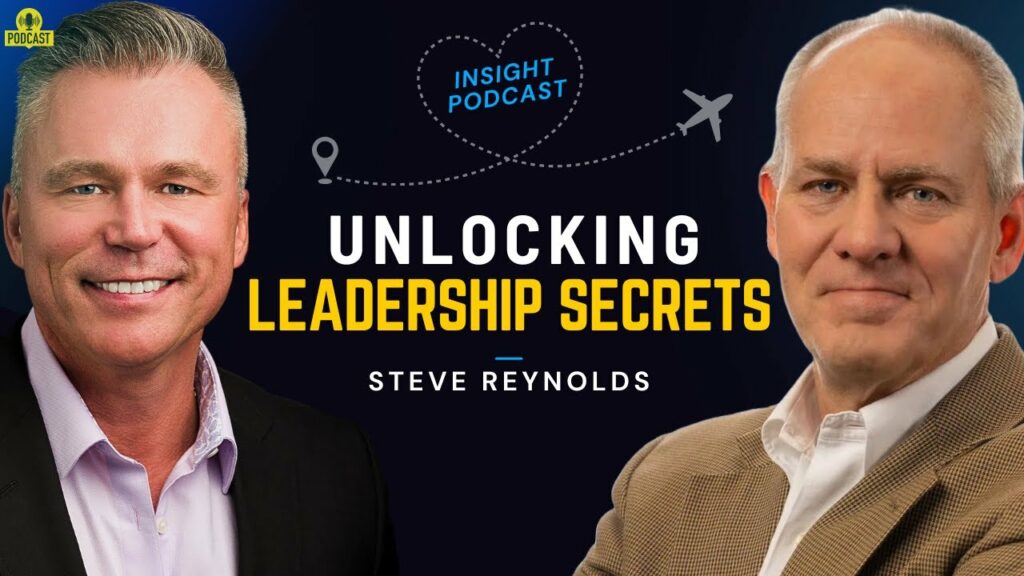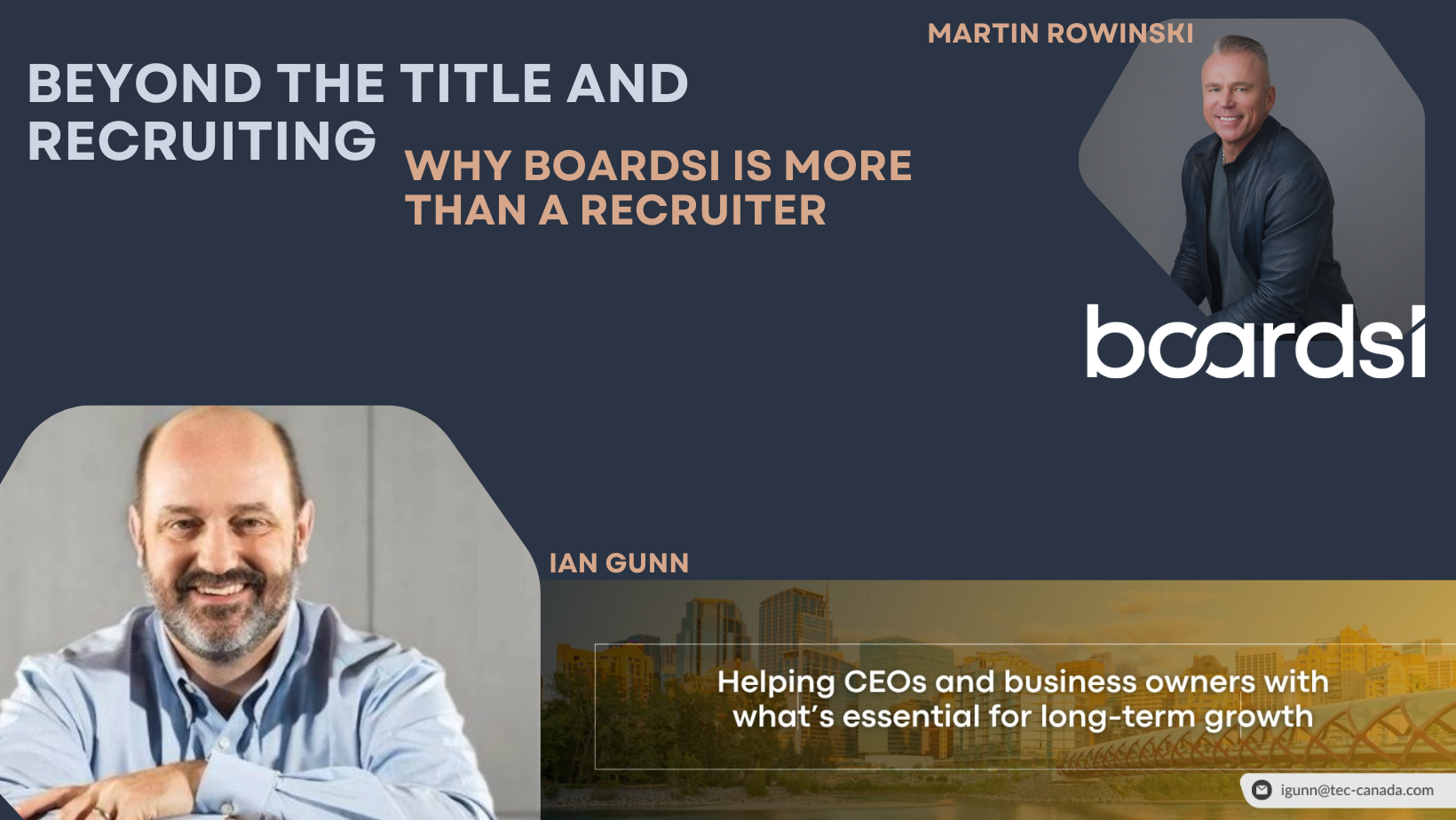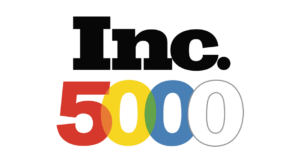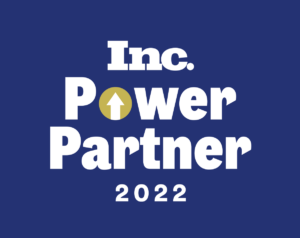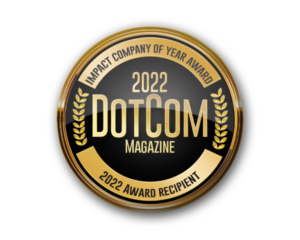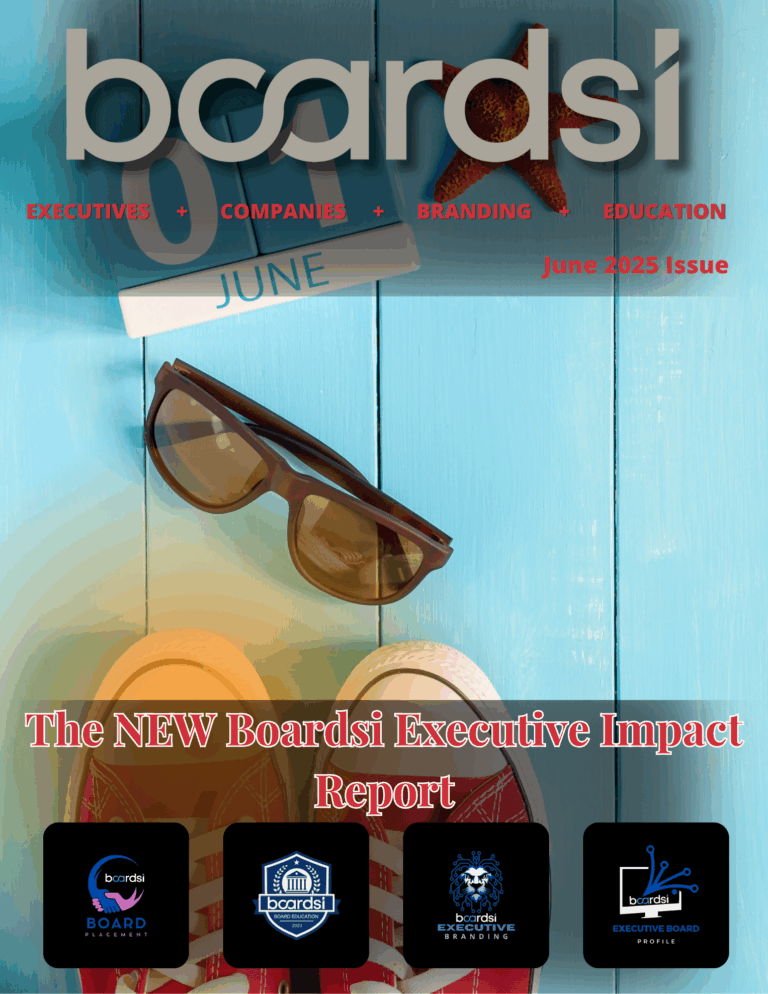In this episode of Leadership Talks, Martin Rowinski, CEO of Boardsi, sits down with Steve Reynolds, Chief Strategy Officer at Emburse and the former CEO and founder of TripBam. Steve brings a wealth of knowledge from his extensive career in the travel and technology industries, including his experience founding multiple companies and his recent achievement of being named one of the top 25 most influential executives in corporate travel.
Throughout the discussion, Steve shares valuable leadership lessons learned over the years. From his early days starting companies in corporate travel to overseeing a successful IPO, his journey offers key takeaways for entrepreneurs and executives alike.
Key Lessons from Steve Reynolds:
- Equity Matters: In the early stages of a startup, holding onto equity is critical. Steve’s first company taught him the importance of maintaining as much ownership as possible to maximize value at exit.
- Be IPO-Ready: Steve explains that while going public can seem like an exciting milestone, companies should only IPO when they’re fully prepared to handle the challenges that come with being publicly traded.
- Learn to Fail Fast: Companies that fear failure often become stagnant. Steve emphasizes the importance of being willing to try new things, accept failure when it happens, and move forward with confidence.
- Smart Capital Decisions: Entrepreneurs should delay raising capital until absolutely necessary. Bringing in outside funding comes with external pressures, and the ability to remain cash flow positive before raising money allows for greater strategic flexibility.
Steve also discusses the evolution of corporate travel, including how his current role at Emburse is focused on integrating best-in-class solutions to build a comprehensive travel and expense platform. His earlier venture, TripBam, pioneered rate-shopping automation, helping corporate clients save millions on hotel and airfare bookings.
Overall, this episode offers actionable insights for business leaders in any industry, particularly those navigating startups, strategic decision-making, and corporate growth.
Martin Rowinski (00:01.085)
I’m your host, Martin Rowinski CEO of Boardsi And today we have the pleasure of speaking with Steve Reynolds, the Chief Strategy Officer at Emburse and the former CEO and founder of TripBam. Steve has an extensive background in the travel and technology industries. having founded and led multiple successful companies. He was recently named one of the top 25 most influential executives within corporate travel. Steve, thank you for joining us today.
Steve Reynolds (01:21.437)
Thanks, Martin. I’m glad to be here.
Martin Rowinski (01:23.389)
Yeah, this is definitely I haven’t had anybody from the travel industry, so I’m looking forward to this.
Steve Reynolds (01:30.506)
Okay, that’s kind of hard to accomplish, but happy to jump in, or if you think appropriate.
Martin Rowinski (01:33.908)
you
Martin Rowinski (01:37.509)
Awesome. Well, you’ve had a remarkable career in the travel and technology sectors, founding and leading several successful companies. Can you share some of the key lessons you’ve learned along the way that have shaped your approach to leadership and strategy?
Steve Reynolds (01:54.606)
Yeah, that’s a really broad question. So I’ve had the opportunity, whatever, to kind of start up and exit four companies within the corporate travel space. All of them a bit different. My first one was 40 years ago. It was a division of a travel agency that was acquired by American Express. And I think the lesson from that one is if you do start up a company,
When you raise the capital, just make sure you hang on to as much equity as possible. On that one, you know, I kind of started out with what I thought was a fair amount of equity turned out not to be and lessons learned upon the exit a bit surprised. So didn’t make that mistake twice.
Martin Rowinski (02:44.383)
Ha ha ha.
Steve Reynolds (02:46.862)
On the second one, some executives in the travel space called me up, said I want to kind of do it again. So we started up a company in Dallas called Travel Technologies Group that morphed into a much larger company called TRX. And that company IPO’d in 2003 and a fairly successful IPO. But the lessons learned on that one was don’t IPO until you’re ready, until you’re significantly larger.
We were doing about 180 million in revenue and that was just way too small for a publicly traded company. Just the rigors, the cost, the discipline, you know, when you’re publicly traded, puts a lot of tax on the company and it really just kind of kicked us to our knees. We stopped, the innovation slowed down, just became a real challenge. So that was that one. Had another startup.
That was a CTD kind of a platform play anyway getting to corporate travel specific, but That one I had to exit fairly early Sold it to Sutherland Global to start up trip BAM or really just once I raised a venture capital round with this most recent company it was time for me to kind of decide what I want to do and I had to exit that company and then really get serious behind trip BAM and It was just a wild ride
I mean, the company grew dramatically, about 40 % year over year, and then just recently exited in July and acquired by Embers, which is backed by K1, which is a private equity firm out of LA. And I think the lesson learned on that one is that when you finally do go through a process of selling a company using investment bankers and attorneys and such, just make sure you have a really strong team there to help you out through the process.
when you don’t know things. And it always takes a lot more time and a lot more work than you anticipate. But we had a successful outcome. It turned out really well. And I’ve been now with Emburse for about a little over a year. And now Chief Strategy Officer helping Emburse sort of navigate into travel to build out a full travel and expense platform.
Martin Rowinski (05:08.199)
Are you part of the founding team behind Embers or they just brought you on as a CTO? I’m sorry, CSO.
Steve Reynolds (05:17.199)
So they acquired my company in July. Embers has been around for a number of years. Yeah, so the philosophy is rather than try and build all of the different components that make up travel and expense, let’s buy the best of breed companies out there and integrate them and put them under the Embers brand. So that is what we’re doing and kind of what I’m involved in.
Martin Rowinski (05:19.857)
Okay, so there are the ones that are quiet.
Martin Rowinski (05:37.001)
Got it.
Martin Rowinski (05:42.237)
Okay, got it. So when you look back and you obviously have lessons that you’ve learned, do you look at those lessons as tough lessons or you just look at it as, know, could have done better, but let’s move on and do better next time.
Steve Reynolds (05:48.704)
Thank
Steve Reynolds (05:59.194)
Yeah, it’s more of the ladder. I mean, companies, when they get afraid to make mistakes, they just get stuck. You know, everybody doesn’t want to say anything. The phone calls get really quiet. No one’s willing to take any risk. And that’s just a bad spot to be in. So you got to be willing to try things, fail, fail quick, move on, admit your mistakes. you know, nobody’s at fault. It’s just, hey, we gave it a try.
we put a significant amount of effort or capital or whatever into it, come on, it didn’t work. And you got to be also kind of willing to pull the plug fairly early and just say, look, you know, this is either a lot harder or, you know, it’s just not working like we anticipated. Let’s pull the plug on this one. Let’s go invest our time and effort on some of these other things that look, you know, easier, better, you know, whatever.
Martin Rowinski (06:51.227)
I agree. always say, I’ve said this in so many because I’m glad that I’m talking to people that feel the same way. But yeah, failure is just a stepping stone to success, right?
Steve Reynolds (07:02.058)
Right, that’s right. Yeah, I mean, it’s you see lots of companies or CEOs where they’ll fire someone over a failure. And I mean, sometimes that’s appropriate, you know, if it’s just a systemic problem where a guy just keeps making the wrong decisions or gal over and over again. But if someone’s willing to stick their neck out and try something new and put their, you know, just a lot of effort, you can’t fail the guy for trying or gal, right?
You should reward them, pat them on the back. Nice job. I know it didn’t work out the way you expected, but come on, let’s move on. Let’s take your talents and apply them to something that might give us a better chance for success. And that’s a hard decision. Those are hard calls to make because typically you’ve invested seven, eight figures in these ventures and winding them down is tough. that’s just what you got to do.
Martin Rowinski (07:56.893)
reality. As the chief strategy officer now at Embers, you’re responsible for integrating best in class solutions to provide an end to end travel and expense solution. What are some of the biggest challenges and opportunities you see in the space and how is Embers position to address them?
Steve Reynolds (08:18.828)
Yeah, so corporate travel is evolving quite a bit. The legacy distribution method is sort of starting to fall apart a bit. And what I mean by that is most larger companies, they hire a travel agency. They then implement an online booking tool. They trend to try and enforce policy and compliance and all kinds of other stuff through
that booking tool and it just creates a pretty high level of traveler dissatisfaction as a result. As a traveler, I’m used to going to airline .com, hotel .com, car .com, doing my same thing. I have a pretty good experience because the user interfaces have been built strategically and I don’t get that in the corporate travel world. And there’s companies out there that compete with Emberse that have been just follow saying that legacy model for 40 years.
And it’s just time to try something different, to try something unique. There’s some that will just be keeping you screaming and won’t change. But what we’re putting together is a platform that allows companies choice. You can have a traveler book direct, or you can have them book through your sanctioned online booking tool. But regardless, all the data ends up in the same place. And it’s warehoused, it feeds your mobile solution, it pre -populates an expense report.
The vision for Embers is to eventually just totally automate the expense process, approval process and payment so that you as a traveler, if you’re compliant, it’s very painless, it’s easy and it’s quick. So that’s where we’re heading. We’re a long way there with the acquisitions that we’ve made, but we still have some integration work to be done as far as getting the data in the right places at the right time.
Martin Rowinski (10:15.667)
Got it. And what originally inspired you to start trip BEM and how do see that future of travel spend optimization evolving?
Steve Reynolds (10:25.184)
Yeah, so TripAm was a company that we would take a hotel reservation and then we had robotics to try that would check that rate every single day. And if it went down, we’d automatically rebook it. So the traveler didn’t do anything other than just get an email saying, hey, congratulations, we just saved you 40 bucks on your rate. And if it dropped again, we would keep checking it and it would just keep going on down. Then we also added functionality where we could look at other hotels nearby.
Martin Rowinski (10:41.091)
nice.
Steve Reynolds (10:53.986)
So you would go and you’d say, I’m interested in these six hotels, all right around where I want to be for my meeting or my party or whatever. And it would just shop them every day and would let you know that if the rate dropped below a certain level, if you want to change, click here. And we would change the reservation from one hotel to the other. And it works extremely well. I mean, we saved companies millions and millions of dollars to where we got to.
The company got to where it was serving 250 of the largest companies around the globe. And then we went and applied those same robotics to the airfare side as well, which saved as much money on the hotel side. And so the funny story behind it was I was at a board meeting in DC and we were sitting around a table having lunch or whatever, comparing kind of hotel rates of all things. And one guy always seemed to have the best rate.
And I was like, how do you do that? He goes, well, I have the secretary where she checks the hotel rates every day for me. And if the rate drops, she goes and rebooks it. I’m like, well, that’s a hell of a secretary. But B, you know, that’s probably something we could automate. And so we went and we bought a bunch of hotel data. We created some algorithms and robotics just to kind of see what would happen. And lo and behold, they change all the time. Most
travelers don’t realize how often these hotel rates fluctuate. And so we built the software, built a website, got it all going. And my buddies on the corporate travel side said, look, if you can apply that to corporate travel, we’re all in. So we pivoted, followed the money, and then that’s how the company got started.
Martin Rowinski (12:37.971)
That’s awesome. Yeah, it sounds so simple, but actually extremely cool service.
Steve Reynolds (12:43.906)
Yeah, yeah, no, I mean, it’s something that I think there are travelers that do manually today. I don’t know if you look, but it’s just very. Yeah, exactly. You know, my wife did as well. My wife is the biggest fan of trip band on the planet. It’s just, and everybody likes a deal, right? And if you could really limit it to look, I’m going to let the software do the work for me and it finds savings and I’m okay with that hotel because I’ve already vetted it. It just works really well.
Martin Rowinski (12:49.117)
Yeah, I know my wife does.
Martin Rowinski (13:14.783)
That’s awesome. At which stage in your life did you decide to become an entrepreneur and especially in travel industry? What led to that?
Steve Reynolds (13:24.438)
Yeah, so I was a yeah, that was all accidental. That was just, you know, I wish I could say it was strategic, but it was anything but I was a computer science degree, went and got a master’s MBA, was recorded right out of college with Ernst and Young, which my first assignment was Lifego Travel. And the owner of the travel agency got tired of paying the bill and the crazy hourly rates at the time.
Martin Rowinski (13:28.764)
You
Steve Reynolds (13:53.838)
and said, you know, do you want to come work here? I go, well, I’m really not too thrilled with the idea of working for a travel agency. So he said, well, what if we started a company? I’m like, okay, that could be interesting. So next thing you know, I’m leaving Ernst & Winnie and starting up a company that was focused on building technology for the travel space. And the technology really…
accelerated the travel agency side of the business. I mean they grew from about 300 million in sales to 3 billion in sales over about a three year period. And then that got the attention of American Express, the largest travel agency on the planet. They came in, bought the whole thing primarily for the technology, and then I lasted about two years with Amex before I decided to let’s go do this again. So I’ve got this serial entrepreneurial thing going within the corporate travel space.
Martin Rowinski (14:49.119)
It’s not a bad accident to land into where you exit with Amex buying you.
Steve Reynolds (14:54.284)
That’s true. That’s true. It worked out well. And I’m like, okay, well, that wasn’t all that hard. Let’s go do it again.
Martin Rowinski (14:56.575)
Yeah
Yeah, no, I remember the days of AKA travel agents used to walk into a office and sit down and book your entire trip. Now it seems like everything’s done online.
Steve Reynolds (15:13.87)
Pretty much. mean, unless you have some complex international trip or you’re doing the round world kind of thing, you know, there’s, you know, a lot of it is more for leisure. If you want the destination expertise, you know, I’m going to Africa, you know, I want someone that’s been there, you know, knows a lot about it steer me in the right direction. But for corporate travel, you know, I would say 80, 85 % is all done online these days. If not more. Yeah.
Martin Rowinski (15:40.957)
Yeah. And you’ve built some great tools to help that out. That’s awesome.
Steve Reynolds (15:45.858)
That’s right. That’s right. Yeah. You know, and there’s all kinds of other tools as well that we’ve built. I mean, I’ve built online booking tools, getting access to content that’s outside of the normal distribution channel. I don’t know if you’ve heard of NDC or for a while Southwest Airlines wasn’t available through the GDSs. So we built some tools for that. All kinds of stuff. got real creative. Then the internet came along and
That created a whole ton of opportunity and now artificial intelligence is creating new opportunities within corporate travel to make it even more seamless. So there’s not a shortage of things to do. Let’s put it that way.
Martin Rowinski (16:27.647)
Absolutely. If you were to leave a message in a room, say of 3000 people, entrepreneurs, everybody from successful to people that have done it and failed and to green people that have never, but maybe are curious about entrepreneurship, what message would you want to deliver to leave a positive mark on them?
Steve Reynolds (16:49.912)
Yeah, there’s so many. I mean, where do you start? think first off is, you know, don’t take the money too soon. You know, if you got a great idea and it’s going well, hold off on as long as possible before you start to raise capital. Because once you bring in outside money, you bring in outside timetables, preferences, some are B2C, some are B2B, you know, and it just creates, it makes life more complicated. Let’s put it that way.
Martin Rowinski (16:51.583)
You
Steve Reynolds (17:20.983)
Wait until you’re cashflow positive and really when you can see that, okay, if I take in some money, I can accelerate growth. I know how to deploy this capital in a much more, I don’t know, strategic way. You know, that would be key. You know, and don’t just go with the biggest valuation. I mean, it just, once you go, if you raise a hundred million or whatever, now you set expectation that you’re going to be a billion dollar company.
That’s just hard to accomplish, right? It’s just, you know, find the strategic money, the smart money, I call it the right partner. If you do raise capital and life will be a lot better. The second thing I learned is don’t spend the money once you get it. Every dollar is like oxygen and you don’t want to run out of oxygen, you know, along the way. Now don’t get me wrong. You got to spend money in certain places, you know, mostly to accelerate growth, but
Martin Rowinski (17:52.798)
Yeah.
Steve Reynolds (18:17.058)
Companies, I’ve seen too many of them just start making stupid decisions because I’ve got money. Rather than building something, I’m going to go buy some product. I’m going to overpay for it. Or I’m going to just hire the best law firm on the planet, know, and pay a thousand bucks an hour when really you don’t need that kind of stuff. You got to stay scrappy and nimble and, you know, just, I mean, really just…
Don’t try not to spend the money stupidly and hang on to as much as possible. It it creates it gives you a lot much longer term to figure things out and potentially pivot. I guess the other lesson is every company pivots. You may think you’re not going to but I guarantee you will. Somewhere along the way you’re going to decide holy crap you know I know we’re chasing this particular market B2C whatever but B2B is where it’s at and we need to turn the corner.
It just takes a while to figure that out. So that’s why you also hang on to the money as much as possible because once you do pivot it takes a while to get that revenue stream where you want it to be and then start to see the growth rate that follows. Those are a few. I could go all day.
Martin Rowinski (19:25.439)
That’s for sure.
No, those are great pointers. Since you’re in the travel industry, do you personally travel a lot?
Steve Reynolds (19:35.744)
I used to and I hope to in the near future. mean, so there’s corporate travel and there’s leisure travel. In my early days, just a funny story, we sold software to Continental Airlines and they didn’t have any money at the time. So they paid us in tickets, airline tickets. So we were just drowning in all of these first class airline tickets anywhere Continental Airlines flew. So my wife and I, it was pre -kids, we just got married.
We were flying all over the place. We’d go to Paris, London, Germany, wherever, you name it. We hopped on a plane and went. But that was early, early days. And then it got to be all about corporate travel, back and forth to New York, LA, Chicago, kind of the typical thing, lots of trips to Europe, predominantly London, UK. And then now my corporate travel slowed down, especially as a result of COVID. Everybody’s doing web calls now.
Now it’s just kind of events, trade shows and stuff. And then I’m hoping to in the near future, at some point retire and then get back and do some leisure travel. And maybe I’ll sell some more software to airlines for airline tickets and go back to where I was.
Martin Rowinski (20:50.387)
So when it comes to leisure, if you were able to jump on a plane tomorrow, where would you want to go?
Steve Reynolds (20:56.098)
Oof, well that’s a surprise question. You know, we’ve been looking at Iceland, you know, check out the Northern Lights, we haven’t done that. We haven’t been to South Africa yet. We just got back from Japan. We went to Tokyo and Kyoto and a few places over there, had a great trip. Italy is one of our favorite spots. We’ve been there multiple times. I like Paris.
Not so much the city, but the suburbs or whatever and the smaller towns around Paris. Had some really good trips there. I like Germany a lot. There’s all kinds of places I wish to go. I really haven’t traveled that much for leisure in the US, so there’s parts of California I’d like to see and probably check out Alaska. Stuff like that. What about you? I’m in Dallas, Texas. Yeah.
Martin Rowinski (21:35.167)
Ha ha ha ha.
Martin Rowinski (21:48.371)
Where are you located now? Okay.
That’s awesome. I’m actually in, I think two weeks on the 18th, I’m off to Italy, France and Italy.
Steve Reynolds (21:54.552)
Where are you going to next?
Steve Reynolds (22:06.059)
Okay, whereabouts in Italy you going?
Martin Rowinski (22:07.967)
I’ll be Chica Terra and Capri. So I’m off the coast.
Steve Reynolds (22:12.854)
Yeah, yeah, Chincoteira is great. We had a really nice trip there. and there’s one place we are going at the round of the holidays. heading to Correios, Mexico. If you’ve never heard of it, you need to check it out. It’s C -A -R. Yeah, I’m hesitant to tell people about it because it’s going to get too popular, but it’s really unique. Yeah, I got it, but it’s better. It’s got a lot of outdoor…
Martin Rowinski (22:25.235)
Okay.
I have not, yeah.
Martin Rowinski (22:35.043)
Like to loom?
Steve Reynolds (22:41.91)
large artwork. It’s a it’s a cove that was bought by an Italian designer so it has villas all around it. It’s just really unique and it’s just check out Correia’s if you get a chance.
Martin Rowinski (22:57.289)
That’s awesome. Well, thank you, Steve. Thanks for joining us on today and sharing your insights, your experience and vision in the travel and technology industries. They’re truly inspiring. And it’s been a pleasure to hear about your journey and the innovative work you’re doing at Embers. And I love the fact that you got into industry by, I guess you can say accidents or coincidence. So that’s pretty awesome.
Steve Reynolds (23:23.564)
Yeah, I think most people, yeah, you know, if you’re going to get into a particular vertical, it’s not really by design. It just sort of happens when you get recruited out of college and you just end up on your first assignment, whatever it might be. But it worked out great. And I think for most folks, it works out. It works out pretty well as well. But thanks, Martin. I enjoyed our conversation.
Martin Rowinski (23:28.776)
You
Martin Rowinski (23:39.017)
That’s awesome.
Martin Rowinski (23:43.079)
It was great. It was great. And for our audience, thank you for tuning in to another episode of Leadership Talks and stay tuned for more inspiring conversations with leaders from various industries. Thank you and until next time, take care, everyone.

